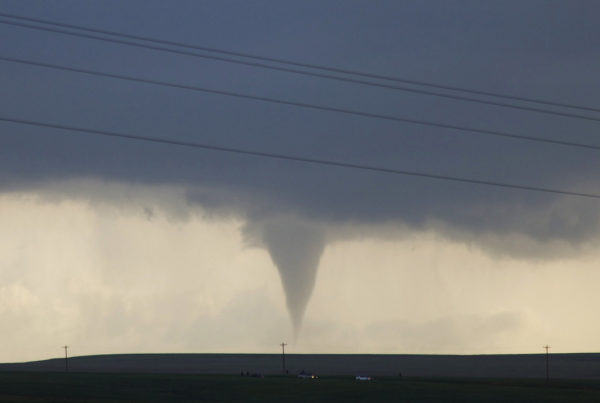Texas’ Gulf Coast is home to one in every four Texans, and 30 percent of the American oil-refining industry is based there, too – that’s the remind Land Commissioner George P. Bush gave reporters late last week as he and the U.S. Army Corps of Engineers announced a sweeping new plan to protect Houston and the Gulf Coast from hurricane storm surges. It’s a multi-billion dollar project that will develop new infrastructure on a massive scale.
Kiah Collier is an energy and environment reporter for The Texas Tribune and says the bulk of the project will be a levee system along Galveston Island and the Bolivar Peninsula.
“The purpose of it is to block hurricane storm surge. There would be a gate in between the two barrier islands meant to block hurricane storm surge from going up the Houston Ship Channel,” Collier says.
One important reason for that is to protect the dozens of refineries and chemical plants that line that waterway.
“They produce a vast amount of the nation’s gasoline and chemicals that are used to make plastic,” Collier says.
So far, the area has been spared a major environmental disaster, but Collier says the storm surge from future hurricanes could be detrimental. She says after Hurricane Ike in 2008, scientists did extensive computer modeling to see what could have happened to the ship channel under different circumstances.
“After that, scientists at Rice University and Texas A&M Galveston did really extensive storm modeling that showed that if Ike hadn’t shifted and if it had hit at the western end of Galveston Island, a massive storm surge would have gone into the Port of Houston,” Collier says. “There are thousands of storage tanks that hold crude oil and other chemicals … and those potentially would have been dislodged.”
This new plan by the Texas General Land Office and the Army Corps of Engineers includes a series of seawalls and floodgates at a price tag of $31 billion. Collier says the plan also includes a levee system for the Houston area in general, and also beach renourishment – i.e. adding sand lost to erosion – and dune restoration. But she says it’s not clear when the project will start.
“[It’s] really anyone’s guess,” Collier says. “There’s a long, long line of these projects across the country for funding, so it’s kind of a question of when Congress will fund it.”
She says some are skeptical that the project will get underway anytime soon, but that Commissioner Bush is hopeful he can convince Congress that the project is important for national security reasons.
Collier says there is some pushback against the project from state and local environmental groups that are concerned about the project’s environmental impact, especially in an ecologically sensitive area like the barrier islands. She says some property owners are also concerned.
“[They] worry about the seizure of land on the Galveston Island,” Collier says. “It’s a question of, What would this look like? Would it be this massive earthen mound?”
Collier says there’s still a lot of questions that need to be answered before the plan becomes a reality.
Written by Caroline Covington.
















